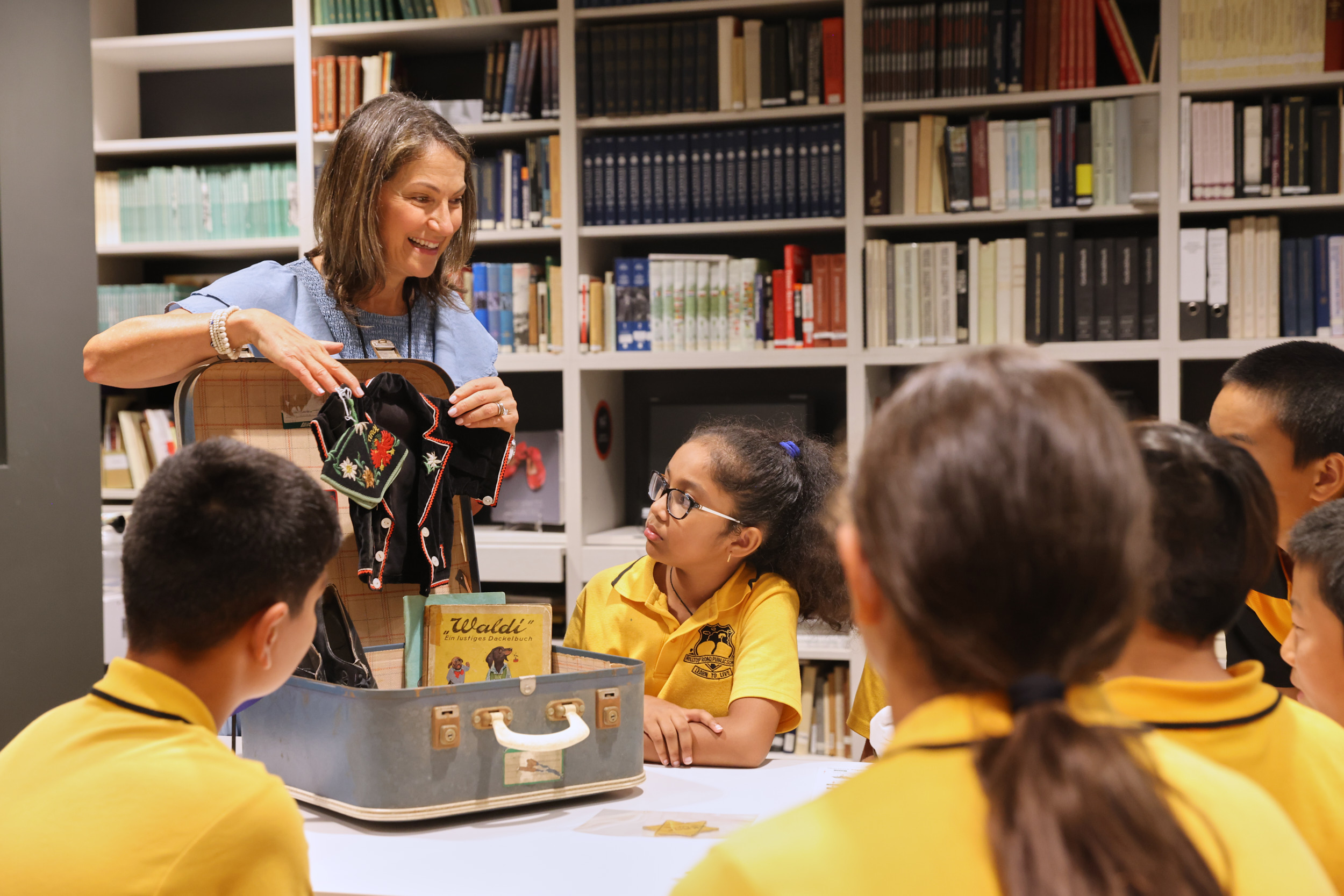Blog
August 27, 2024
Goodbye to Olga Horak OAM
By Jana Vytrhlik
Olga was one of Australia’s most prominent Holocaust survivors and decades of her service as a guide at the Sydney Jewish Museum had made her a cherished figure, loved by staff and countless visitors. She was still sharing her life stories with students at the Sydney Jewish Museum right up until she passed, having celebrated her 98th birthday with family and making plans for the coming months. Her mind was sharp and she started working on a second and expanded edition of her memoir. I saw her the week before and – like always – left promising to call again soon.
 Figure 1: Olga Horak and Jana Vytrhlik with the Barkany’s painting in Dec 2022. Photo Anne Slade.
Figure 1: Olga Horak and Jana Vytrhlik with the Barkany’s painting in Dec 2022. Photo Anne Slade.
Olga and I first met in the early days of the Sydney Jewish Museum and, instinctively, that’s where my steps also took me on Sunday. Walking around and remembering her presence helped me to say goodbye. I saw her small commemorative artwork on display on the ground floor. It was only recently that Olga told me that she created the sculpture ‘Son of men keep not silent’ in 1994, on the 50th anniversary of her family’s deportation to Auschwitz-Birkenau. She wanted to reinterpret one of the most recognisable symbols of Judaism, the menorah, with a six-light candelabrum to symbolise the six million Jews killed in the Holocaust.
Then I walked into the theatrette. The room was quiet and the chair where Olga once sat to tell her stories was empty. Her small, modelled composition of mother and child displayed on the wall reminded me of the loss of her mother at the end of the war.
It was time to leave, when I suddenly saw Olga’s life-size image projection in an empty classroom next door, breathing and flickering. Was this the AI playing tricks on me? For a second, I hesitated but then entered the empty classroom. Last year, the Sydney Jewish Museum joined other, world-famous Holocaust museums in creating interactive biographies of survivors using the latest AI and language-processing technology.
And so there she was, Olga dressed in her iconic blue dress, sitting in front of me and gently responding to my words of goodbye. If I had my doubts about the new AI dimensions in the Holocaust survivors’ testimonies, I could fully appreciate the imaginative technology now.

Figure 3: Olga Horak, Interactive biography, 2023. Video of 18.8.2024.
I have known Olga for decades. Our common Czech and Slovak origins always made for plenty to talk about, but it was art that brought us closer in the past few years. And not only her own art, but paintings by another survivor, who, through an incredible twist of fate, was my maternal great-uncle.
Last year, during one of my visits to Olga’s home, I noticed a picture on the wall of a beautiful old house painted in a somewhat familiar style. A closer look at the signature confirmed it. The watercolour was painted by my great uncle, architect Eugen Barkany in Bratislava in 1959. He was the older brother of Hugo Barkany, my grandfather, who did not survive.
When I saw Olga last time, only two weeks ago, she told me the story behind Barkany’s artwork. She received it in Sydney in her early days and treasured it ever since because it showed a house in Bratislava’s Jewish quarter which she knew very well. And Olga wanted me to have the painting.
So now, with a feeling of deep sadness and gratitude, I treasure Olga’s family treasure, which – by sheer chance – had become a treasure of two families, whose fate was met in a faraway land from its initial home.
Olga Horak lived her life fully to the end. The horrors of the Holocaust shaped her personality and gave her purpose for life. Her words and her art urge us to remember and be her voice. The stage where Olga shared her story many times may be empty but her message of humanity and hope will reverberate in our minds.
About the author
Prague-born, Dr Jana Vytrhlik is an independent art and architecture historian and Judaica specialist with a PhD in Art History from the University of Sydney. She is presently leading the curatorial review of the A.M. Rosenblum Jewish Museum at the Great Synagogue Sydney. Her book Treasures of Old Jewish Sydney was published in May 2024.
A version of this article was first published by The Jewish Independent on 20 August 2024.


What’s On Newsletter
Keep up to date on all Museum events and exhibitions.